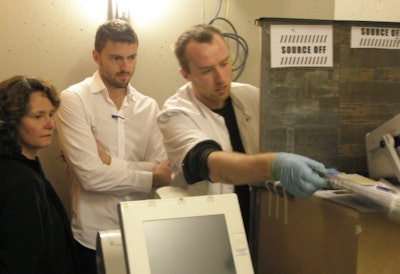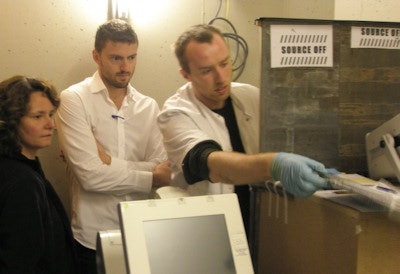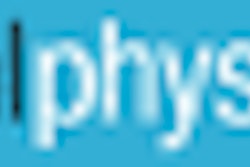
Interest in using high-dose-rate (HDR) electronic brachytherapy sources (EBS) for accelerated partial-breast irradiation (APBI), or intraoperative radiation therapy, is increasing. Recent studies have shown that the use of EBS for APBI results in reduced radiation doses to normal tissues compared with Ir-192 HDR brachytherapy. In addition, the need for radiation shielding of treatment rooms is reduced due to the low tube voltage of 40 kV to 50 kV.
One challenge, however, is the difficulty of measuring absorbed dose in such low-energy (below 50 keV) brachytherapy sources. As such, researchers from Linköping University in Sweden and Maastricht University Medical Center in the Netherlands have tested and compared the accuracy and performance of lithium formate electron paramagnetic resonance (EPR) dosimeters with an independent dosimetry system using radiochromic EBT2 film (Physics in Medicine and Biology, 23 April 2015, Vol. 60:9, pp. 3869-3882).
The researchers used the dosimetry systems to measure absorbed dose to water around a low-energy 50 keV electronic brachytherapy system (Xoft Axxent EBS). The lithium formate EPR dosimeters demonstrated good performance, in accordance with earlier experiments at the higher photon energies of Ir-192 HDR brachytherapy.
Lead author Emelie Adolfsson, a medical physicist at Linköping University, and colleagues, reported that the EPR dosimeters yielded results in agreement with Monte Carlo simulations at 10 mm, 30 mm, and 50 mm from the EBS. The EBT2 films agreed with Monte Carlo and EPR at 30 mm and 50 mm, but a reliable estimate could not be obtained at 10 mm due to the geometry of the experimental setup.
 Brigitte Reniers, Guillaume Landry, and Shane White perform the experiments at Maastricht University Medical Center.
Brigitte Reniers, Guillaume Landry, and Shane White perform the experiments at Maastricht University Medical Center."It is important that dose delivery in radiotherapy can be experimentally verified for quality assurance to high accuracy, preferably by several independent systems," the authors told medicalphysicsweb. "We think that developing reliable systems for verification of absorbed dose in absolute terms and with traceability to primary standards capable of high-accuracy measurements around EBS can contribute to the increased adoption of miniature electronic sources in radiotherapy. This also applies to other applications of small x-ray sources, such as intraoperative radiotherapy."
Encouraging EBS uptake
The researchers note that the use of dose calculations that can account for nonwater heterogeneities is a key issue in bringing EBS into new areas. "Translating clinical experience on dose-response relationships gained with, for example, Ir-192 at a mean energy of around 400 keV, into assumptions for EBS therapy (at 50 keV) based on dosimetry with the TG-43 formalism is not recommended."
Dosimetry at low energies depends heavily upon material composition. Differences between various soft-tissues and water, which can be assumed negligible for dosimetry at higher photon energies, are much enhanced at low energies. "In addition, low-energy photons from EBS have higher LET [linear energy transfer], and hence are likely to cause more biological damage in patients per unit of dose. To assess this, detailed Monte Carlo simulations are also needed," the authors add.
Adolfsson and colleagues are interested in studying real-time monitoring of the output of the electronic brachytherapy sources during the entire irradiation process. They also aim to adapt and develop a lithium formate EPR dosimeter for new applications. Compared with most detector systems, the lithium formate system has many advantages when high dosimetric accuracy is required. It has negligible fading, and a density and material composition close to water for kilovoltage photon energies, which is particularly important in brachytherapy sources with low-energy photons. Its intrinsic efficiency properties are well known, making calibration in megavoltage beams for use in kilovoltage photon beams possible, while keeping high accuracy.
"We would be very interested in using this dosimetry system for dosimetry audits and verifications of radiotherapy, both for external beams and for brachytherapy," the authors explained. "It would be interesting to use the system for verification of model-based dose calculation algorithms capable of accounting for tissue heterogeneities, for both brachytherapy and EBS. Experimental verification of these dose calculations could be performed in semianthropomorphic phantoms using small EPR dosimeters. We hope to receive funding for continued work on the EPR dosimetry system."
© IOP Publishing Limited. Republished with permission from medicalphysicsweb, a community website covering fundamental research and emerging technologies in medical imaging and radiation therapy.



















